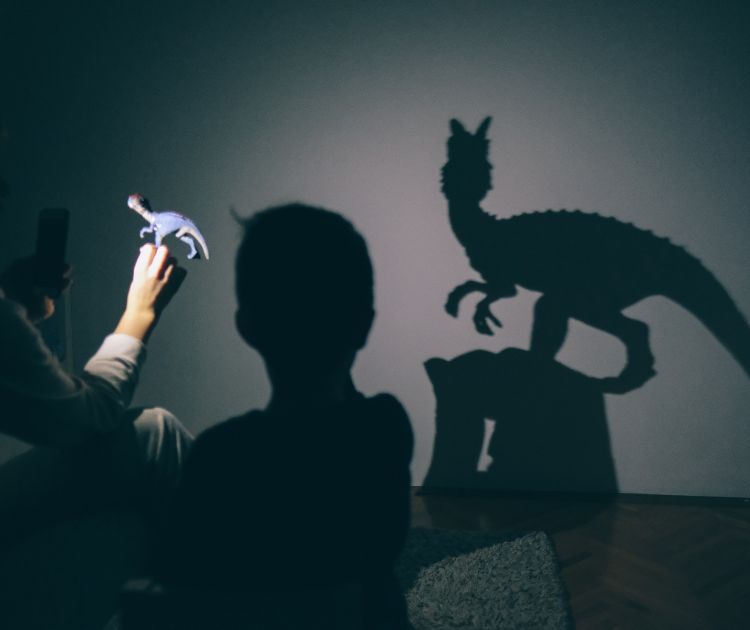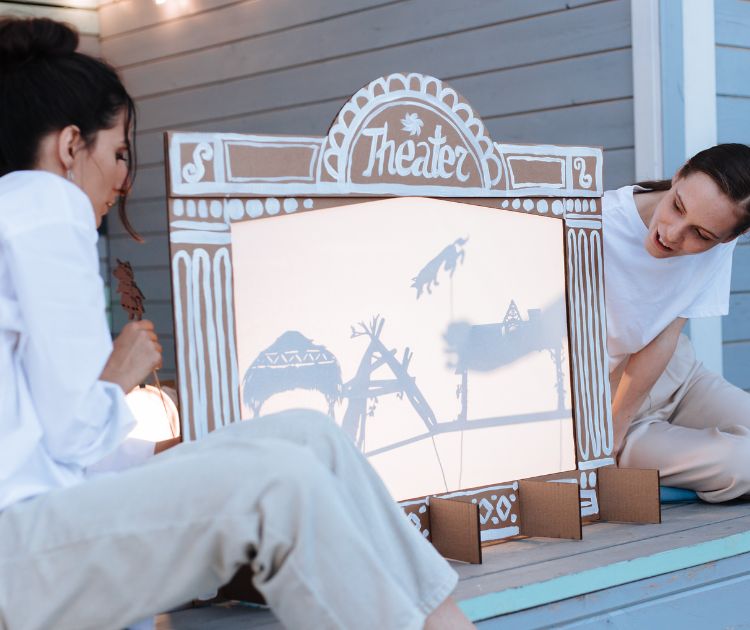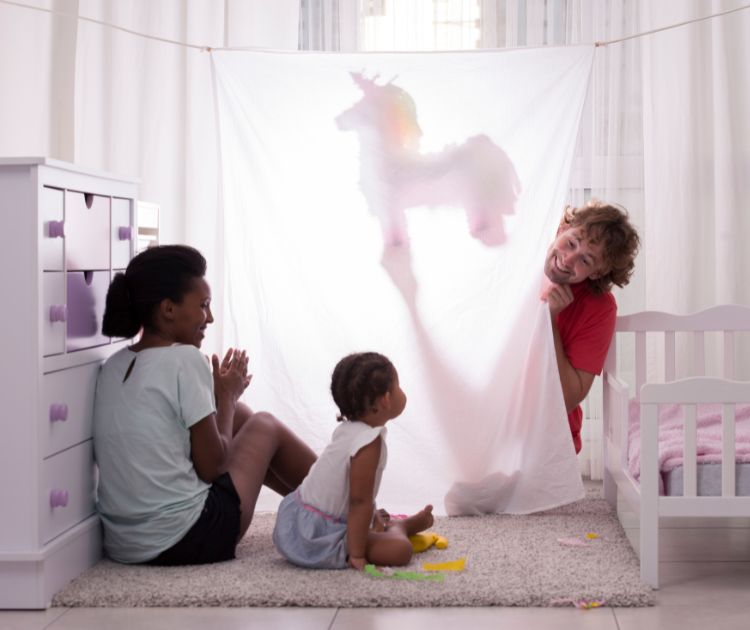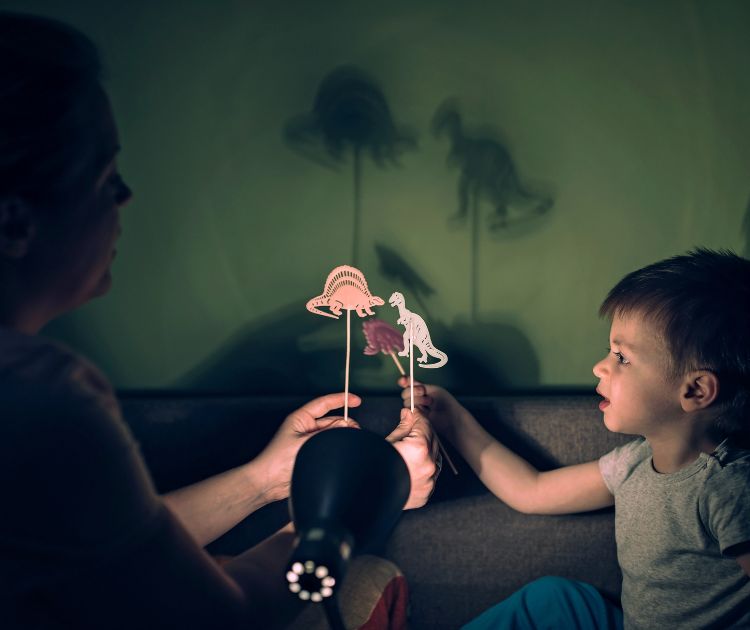Create a shadow puppet show at home to amaze your children

Chinese shadow show at home!
Want to awaken your children's creativity while passing on an ancient art? Chinese shadow theater proves to be both a fun and educational activity, capable of amazing young and old alike. Let's see how to imagine a home show by mastering traditional techniques, with practical tips for stories that leave lasting impressions. We also reveal accessible methods to create silhouettes and puppets, to compose a unique Chinese shadow show!
The basics of Chinese shadow theater
Chinese shadow theater is an art that has used proven techniques for over twenty centuries in China. Its principle? Cut leather puppets placed between a light source and a screen, bringing animated figures to life. Note that this practice, known as *nang* in its traditional form, remains popular in some local theaters.
To recreate this Chinese art at home, here are the key elements to gather:
- Screen: A white sheet or tracing paper is sufficient. Some prefer to imitate professional theaters with a wooden frame covered with fine fabric.
- Light source: A simple lamp will do, but avoid hot bulbs that could damage leather puppets.
- Figures: Tanned leather remains the historical material, even though rigid cardboard is suitable for occasional shows. Typically Chinese patterns (dragons, Ming warriors) reinforce authenticity.
- Supports: Bamboo sticks allow precise puppet manipulation, as done by *nang* masters.
- Fasteners: The mobile joints of figures require solid fixings. Paper fasteners well imitate the system of traditional theaters.
With these elements, even beginners can reproduce the atmosphere of Silk Road shows!

Paradoxically, this millennial art adapts perfectly to modern leisure. Children's workshops often use simplified versions of Chinese puppets, sometimes accompanied by electronic music. Some museums also organize introductions combining traditional stories and contemporary scene creation. A lively way to perpetuate *nang* expertise while stimulating creativity.
How to organize a family Chinese shadow show at home?
To prepare a Chinese shadow theater show at home, it's important to select the right equipment. Here are some comparative elements to help guide your choice, according to children's age and available budget:
Type of equipment | Advantages | Considerations |
Paper/stretched fabric screens | Easy to set up, economical. | Requires a frame, can be fragile. |
LED Spotlights | Sharp and precise shadow, low power consumption. | May require initial investment. |
Bedside lamps | Easy to use, accessible. | May produce a less defined shadow. |
Mini "Par 16" projector | Strong shadow definition. | Requires suitable support and special attention to temperature. |
Shadow creation kits | Specific equipment included, easy to use. | Can be limited in terms of creativity. |
Legend: This table compares different types of screens and light sources for family shadow theater, considering their advantages and elements to consider for making the best choice.
Puppet manipulation requires certain know-how, especially for younger ones. To facilitate handling, ergonomic handles can be designed. Start with simple gestures, then create a short story with the children. With practice, they will easily recreate a traditional scene behind the screen. And why not add ambient music to enhance immersion?
Creating Chinese shadow shapes: models for children

To introduce children to Chinese shadow theater, nothing beats simple animals to create. Start with models that have basic and recognizable outlines - dog, cat, bird or rabbit always make an impact. How to simplify profiles? Focus on the key elements of each animal using geometric shapes. With cut leather and a few sticks, you'll quickly create a menagerie for your shows!
To modernize the concept, combine different figures in your stories. Animal tales or pirate adventures work particularly well.
Quick tip: Create interchangeable accessories (hats, swords) to vary scenes. Some artisans even add musical elements to enrich performances. If you visit an Asian museum, observe how puppeteers from the last century played with shadows and light. Great inspiration for your own creations!
Mastering the art of movement for a successful Chinese shadow show
Creative materials for Chinese shadow silhouettes
For your leather puppets, why not explore contemporary alternatives to traditional Chinese methods? Tracing paper or tissue paper offer surprising results. As for joints, paper fasteners remain essential - just like strong glue for increased longevity. These materials, used for centuries in Asian shadow theaters, allow you to create figures that are both solid and expressive.
The mobility of limbs requires special attention. Fine wire provides ideal flexibility for dynamic scenes, while a bit of wax reduces friction. Curiously, some ancient Chinese techniques even recommend using horsehair! With these tricks, your creations will gain fluidity, especially under spotlight illumination.
Fun scenario ideas
Adapting traditional tales remains a sure way to captivate young viewers. The secret? Choose visual stories like "Little Red Riding Hood", whose key scenes lend themselves wonderfully to the world of shadows. Note that Chinese museums often display nang - these 19th-century leather puppets - inspired by these timeless tales.
Involving children in creating a collective story stimulates their imagination. Define a central theme, then let them suggest plot twists while structuring the narrative. Don't forget to integrate sound elements: traditional Chinese xylophone music or some small bells can make all the difference during the performance.
Sound ambiance and special effects
Creating a soundtrack with everyday objects often reveals inventive genius. Bubble wrap becomes fire crackling, a leather basin transformed into a drum imitates heartbeats... As for dialogues, a modulated voice and well-placed silences reinforce suspense. Some Yunnan nang practitioners even use bamboo whistles for special effects!
Live vocal work requires real preparation. Vary intonations by drawing inspiration from traditional Chinese storytellers - their shows often mixing music and shadow theater. For scenery, a simple screen and adjustable lamp are enough to recreate the magic of old traveling theaters. And if you want to enhance the lighting ambiance, our guide on Which lighting for children's bedroom offers complementary tips.
Developing regular practice
To encourage the practice of shadow theater, set up a space inspired by popular theaters in China. How to organize storage? Opt for themed boxes differentiating puppets, scenery, and accessories. Note that basic equipment remains simple: a linen screen, a lamp, puppets, bamboo sticks, and some tools. This permanent workshop will stimulate children's creativity while introducing them to performing arts.
Gradually adapt equipment according to age. When to introduce complex techniques? Observe their manual dexterity before proposing challenges like puppet creation. Paradoxically, the simplicity of the material (often dyed leather) allows sophisticated creations. To vary activities, suggest inventing traditional stories or recreating Chinese mythological scenes. By sometimes incorporating sound elements like music, you'll enrich this artistic experience.

Don't forget that some institutions offer discovery workshops. These hands-on introductions, coupled with regular practice at home, sustainably maintain engagement with this art form. Some parents even add a historical dimension by discussing the evolution of shadow theaters.
A true ancestral treasure, Chinese shadow theater now comes to your home. Imagine unique shows, awaken children's creativity and share precious moments. Don't wait any longer to capture the magic: the shadow adventure begins tonight!













 Choosing the right baby blanket dimensions according to season and age
Choosing the right baby blanket dimensions according to season and age
 How to attach a headboard (with or without drilling): quick and effective soluti
How to attach a headboard (with or without drilling): quick and effective soluti
 Waterproof sheet or mattress protector: the best solution by age group
Waterproof sheet or mattress protector: the best solution by age group
 27 Original, Useful, and Trendy Christmas Ideas for Teens 2025
27 Original, Useful, and Trendy Christmas Ideas for Teens 2025
 Christmas Activities for Baby: Creative Ideas for Home & Daycare
Christmas Activities for Baby: Creative Ideas for Home & Daycare